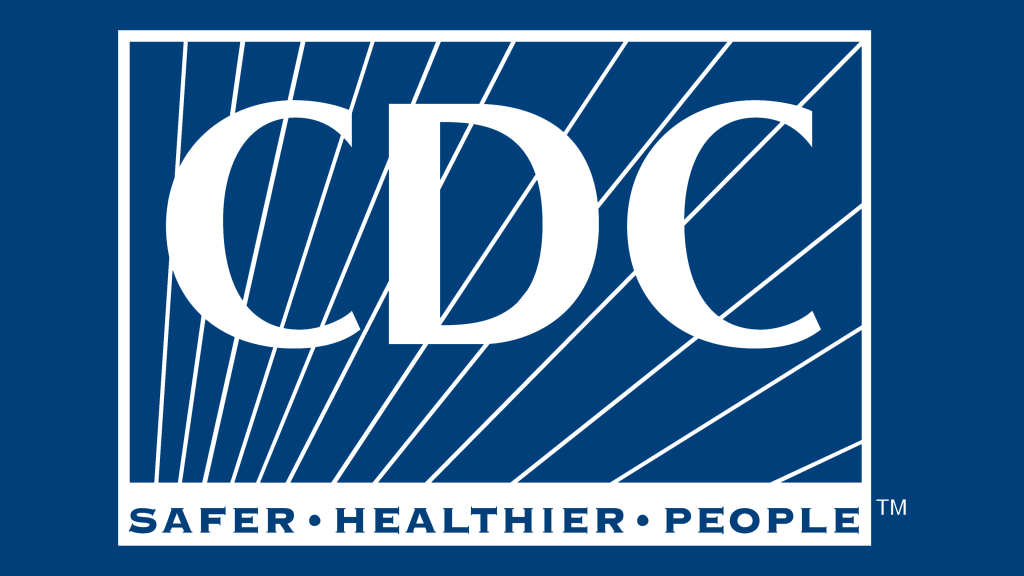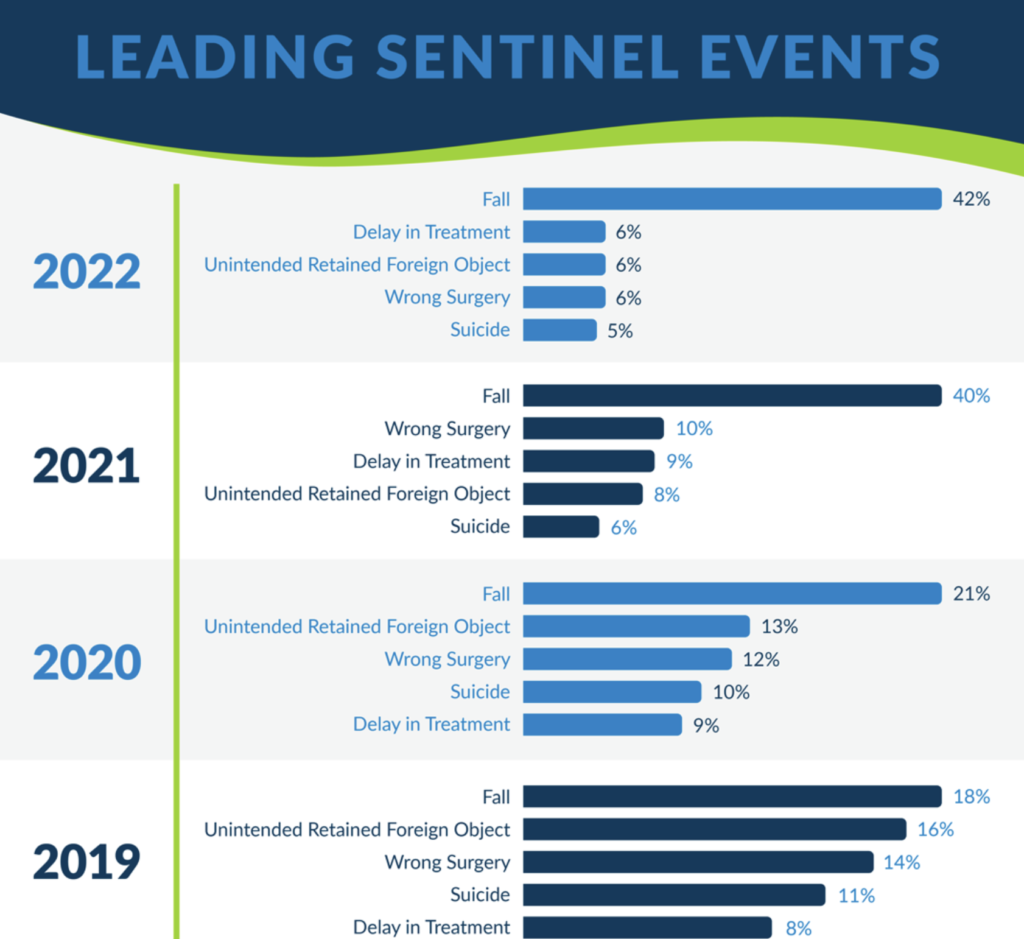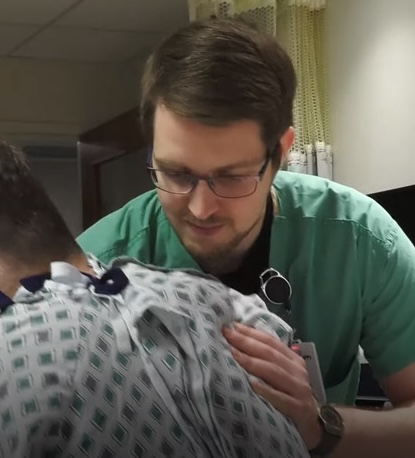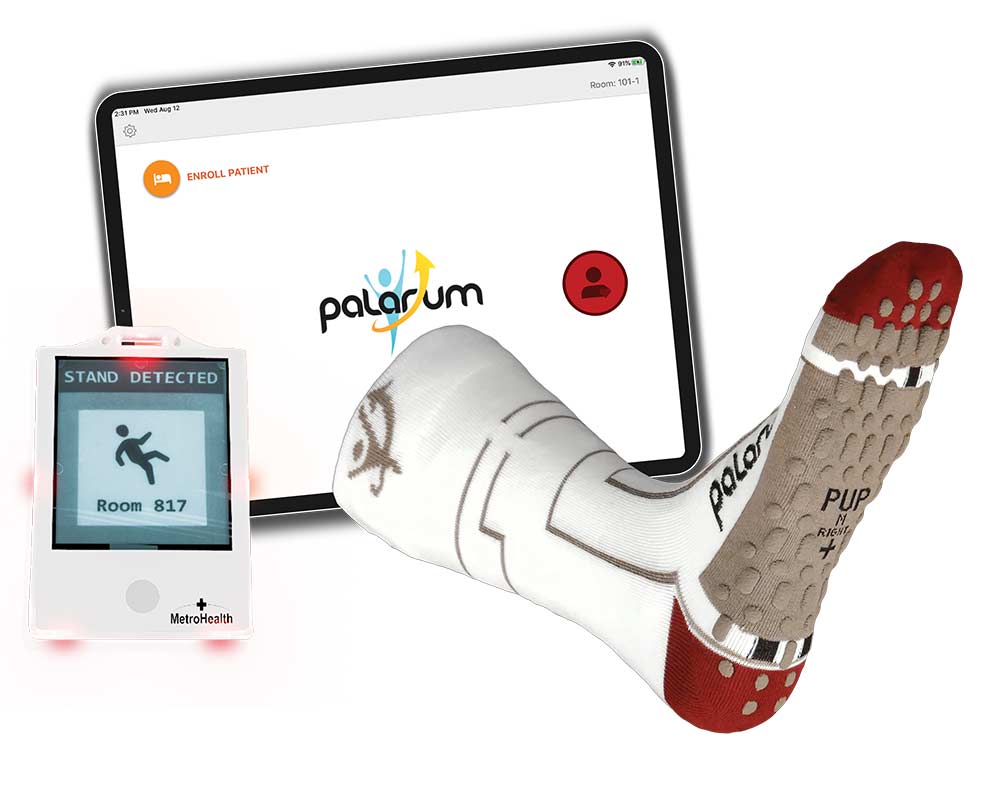| Clinical Studies, Publications
Death from falls on the rise for older US adults
The rates of unintentional fall deaths increased for all older adult age groups between 2003 and 2023, says CDC National Center for Health Statistics
Read More | Clinical Studies, Publications
Early Fall Prevention Measures Critical for In-Patient Safety
A significant number of hospital falls occur at the beginning of treatment, says Journal of Patient Safety report
Read More | Clinical Studies, Publications, Resources
Patient Falls Lengthen Hospital Stays
Study recommends fall prevention measures early in hospitalization
Read More | Clinical Studies, Publications
Patient Falls Continue to Climb
The Joint Commission reports that, in 2022, inpatient falls represented over 42% of all sentinel events i.e., unanticipated incidents causing death or serious injury — and the number has continued to rise.
Read More | Clinical Studies, Publications, Resources
Workplace violence a “global issue” among healthcare workers.
National Institute for Occupational Safety and Health study cites verbal and physical abuse incidence among 10,821 workers
Read More | Clinical Studies, Publications
Report: Evidence-based Fall Prevention Technology Reduces Falls and Costs
PubMed article cites $14,600 in net avoided costs per 1000 patient-days using evidence-based systems
Read More | Palarum in the News, Publications
Socks for seniors are getting smarter, could help prevent falls
McKnights Senior Living (8/16/23) cites Palarum PUP SmartSocksTM among wearable technology innovations for healthcare.
Read More | Palarum in the News, Publications
VA Boston Healthcare System Adopts PUP SmartSocks™ to Prevent Patient Falls
Boston Herald reports Boston VA SmartSocksTM implementation
Read More | Clinical Studies, Publications
SmartSocks™ cut patient falls by over 50% in Palo Alto VA study
Sage Journals reports on a study in three Palo Alto VA hospitals that achieved a 50+% drop in falls for patients wearing SmartSocks vs. those who weren’t.
Read More | Clinical Studies, Resources, Whitepapers
NCOA Research: The Facts on Preventing Falls for Adults Age 65+
More than one in four Americans age 65+ fall each year. Falls are the leading cause of fatal and nonfatal injuries for older Americans. Information from NCOA (National Council on Aging) offers facts, tools, and fall prevention strategies to help keep you safe.
Read More | Publications, Whitepapers
In-Patient Falls Still Lead “Sentinel Events”
The Joint Commission reported in its 2022 Review of Sentinel Event Data that patient falls still account for the highest number of patient safety events, i.e., those events not primarily related to the natural course of patient’s illness or underlying condition.
Read More | Clinical Studies, Publications
Increased Patient Bed Exit Alarms Show Little Impact on Preventing Falls, Study Says
Reported in the Annals of Internal Medicine, a hospital trial assessing the value of increased bed exit alarms showed no significant impact on reducing the rate of patient falls.
Read More | Clinical Studies, Publications, Resources
The ROI of Patient Fall Prevention
A study published in the Journal of Nursing Administration assesses the cost savings associated with implementing nursing approaches to prevent in-hospital falls.
Read More | Clinical Studies, Publications, Resources
CDC/STEADI: Falls Are a Major Threat for Your Patients
More than 3 million older adults are treated in emergency departments for nonfatal fall injuries each year. Medicare costs for fall injuries total over $31 billion annually.
Read More | Clinical Studies, Publications, Resources
Study Compares Patient video Monitoring vs. In-Room Sitters to prevent falls
A study in the Journal of Nursing Education and Practice compares the prevalence of patient falls in hospitals using patient video monitoring versus those using in-room patient sitters.
Read More | Publications, References, Resources
Is Your Hospital Being Penalized By Medicare?
Medicare cuts payments to hospitals that have high rates of readmissions and those with the highest numbers of infections and patient injuries. See how your hospital is affected.
Read More | Publications, Resources, Whitepapers
PUP® Smart Socks
AN INNOVATIVE E-TEXTILE TECHNOLOGY SOLUTION TO PREVENT FALLS Within acute care settings, falls persist as one of the most common and potentially devastatingcomplications of healthcare. The Agency for Healthcare Research and Quality estimates that asmany as 1 million hospitalized individuals fall each year, corresponding to between three and fivefalls per 1,000 patient days.1
Read More 















